“I grew up in a rural area in Belmont County, in a town called Bridgeport, Ohio, on the east-central side of Ohio along the Ohio River. We’re under an hour from Pittsburgh and it’s a tri-state area. There’s Ohio, a little sliver of West Virginia, and then Pennsylvania.
I went to Ohio State, so I moved to Columbus during college and lived there for about 10 years. My major in college was actually in finance, but I always had the desire and really enjoyed gardening. I liked growing vegetables and learning about food and I also liked to cook. I was teaching a class for a kitchen business incubator down in Athens and teaching other people how to put their business plans together. During that time, I just got the idea and thought, ‘Why don’t I just have my own business, too?’
That’s how I started my own food company and I had some pretty good recipes. At that time, we were doing salsa, salad dressing, and wing sauces. Around 2005, I started getting invited more and more to go do in-store demos at all the little specialty food stores that sold our products in the bigger cities like Cincinnati, Columbus, Pittsburgh, and Cleveland. Some of them were doing in-store demos for celiac awareness and gluten sensitivity and my products were gluten-free.
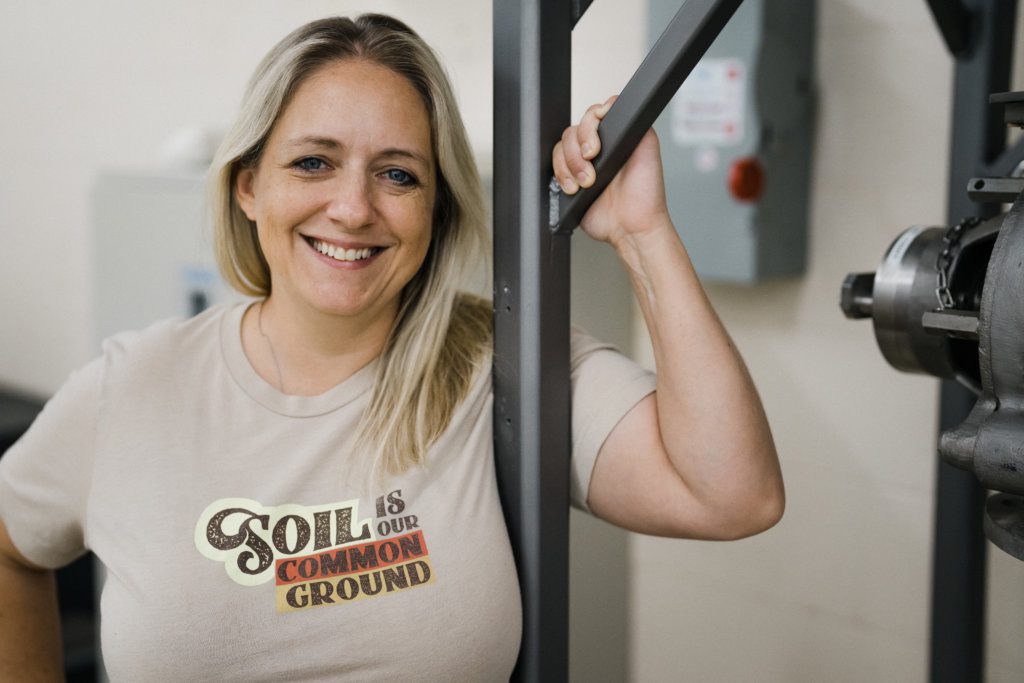
During that time, I got to talk one on one with the people who were coming up to our table and tasting our products. They told us their stories about all the ailments that they’ve had and I felt bad for them.
Many of them said that they really missed pasta, pizza, and bread. After that, I decided I was up for the challenge and tried to see if I could come up with a decent product for them. What I noticed was they weren’t just gluten-free diets that they were on. Their doctors had put them on various limitations, like a soy-free diet or they couldn’t have corn, or they couldn’t have dairy, or eggs. Often, I was finding they were also allergic to many other things in addition to not being able to eat gluten.
I decided then that I wanted my pizza crust to hit all those checkboxes: something that would be free of gluten, dairy, soy, eggs, and nuts. I also wanted it to be something that was plant-based and vegan.
I picked the name Around the World Gourmet because we started off doing a fusion of flavors for our sauces at the time, so the name represented the different flavor profiles. Plus, I’ve always been interested in and a big advocate of the earth and making sure the planet is healthy.
When we switched from doing the sauces and salsas to bakery products and gluten-free pizza crusts, the Around the World Gourmet name just came along with me, because I had already had a decent following. Now, it works out perfectly because of what we’re doing with regenerative agriculture, making it a regenerative brand and through buying ingredients directly from regenerative farmers.
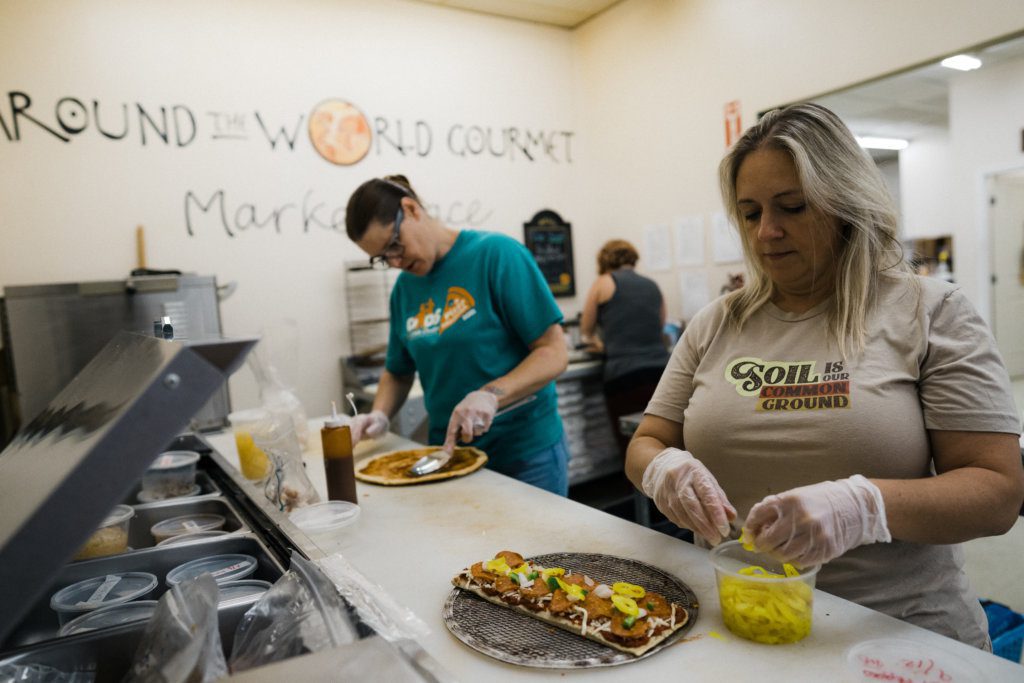
Conventional farming is where farmers go out and plow up the ground, tilling it to get that soil loosened up. That’s how they’ve been doing it for many years now. In conventional agriculture, they also often use a lot of pesticides and herbicides to get rid of the weeds.
With organic farming, you’re not using pesticides and herbicides, but you’re definitely still having to till because there’s no other way to get rid of the weeds.
Regenerative agriculture takes a whole different approach by using cover crops and intercropping. They are also more concerned about soil health, which then, in turn, makes the food healthier and more nutrient-dense.
When you’re tilling up the soil, you’re losing those nutrients and you’re breaking them down. It also releases carbon into the atmosphere, which we do not want for global warming purposes. We want to keep the earth cooler, so we should be sticking to low-till or no-till farming practices.
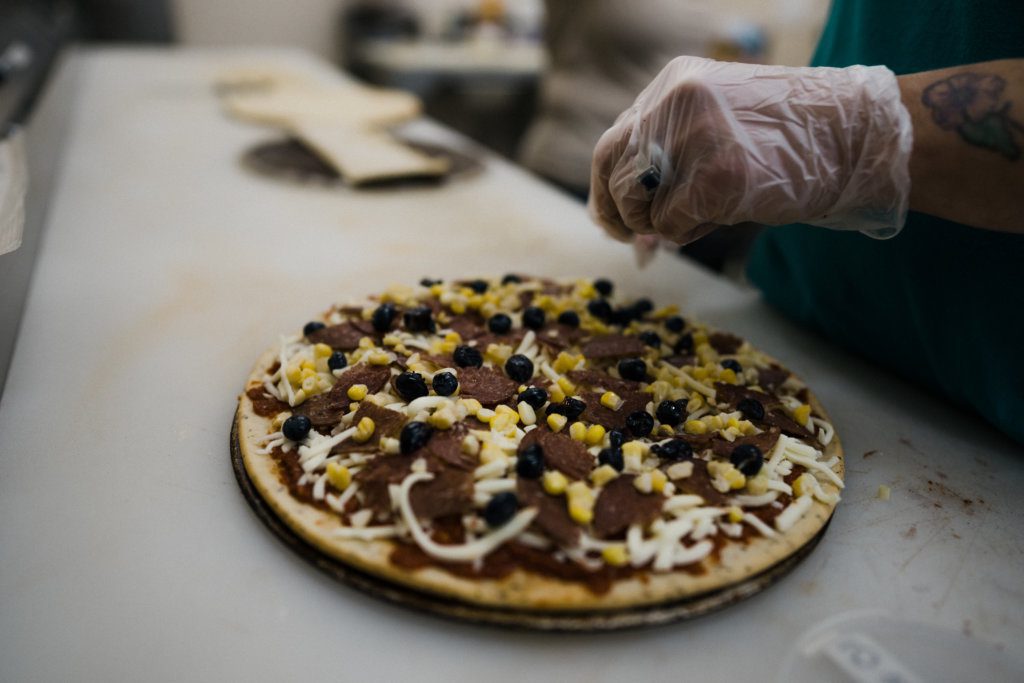
Regenerative farmers will use some herbicides, but the ones that are doing it correctly are actually targeting just the weeds. They are able to test for that by sending their products to a lab. I have people in my network who have proven this, too. The Grounded Growth Network has farmers who have shown that their products and their food actually contain higher levels of nutrients because they’re not tilling up the ground. They’re using intercropping and cover cropping and there is no herbicide or pesticide residue left on the plants that we’re eating.
There’s a lot of mainstream people who don’t know that about weed treatment. They think that if you’re not organic, then you’re eating pesticides, and that’s not actually accurate in some cases. There’s a lot of regenerative farmers out there that target just the weeds and stop after a certain point. In those cases, you get none of the chemicals from that in your body.”
“My friend Sara Harper started the Ground Growth Network about three years ago. It’s an online platform for farmers to discuss regenerative agriculture. It’s made up of a lot of farmers that are either doing regenerative farming already or some that are doing conventional farming who are there to learn how to do regenerative farming. There are also organic farmers who want to have a field that uses regenerative practices to try it out. They don’t want to get rid of their organic certification for the other fields, but maybe they want to start some of their fields on regenerative practices.
Many of the farmers in the group are trying to find brand partners like myself, as well. The intent of the network is to try and educate people on regenerative agriculture, help connect the farmers and have them all get together and learn from each other, and also meet with brands like myself that are interested in buying directly from them.
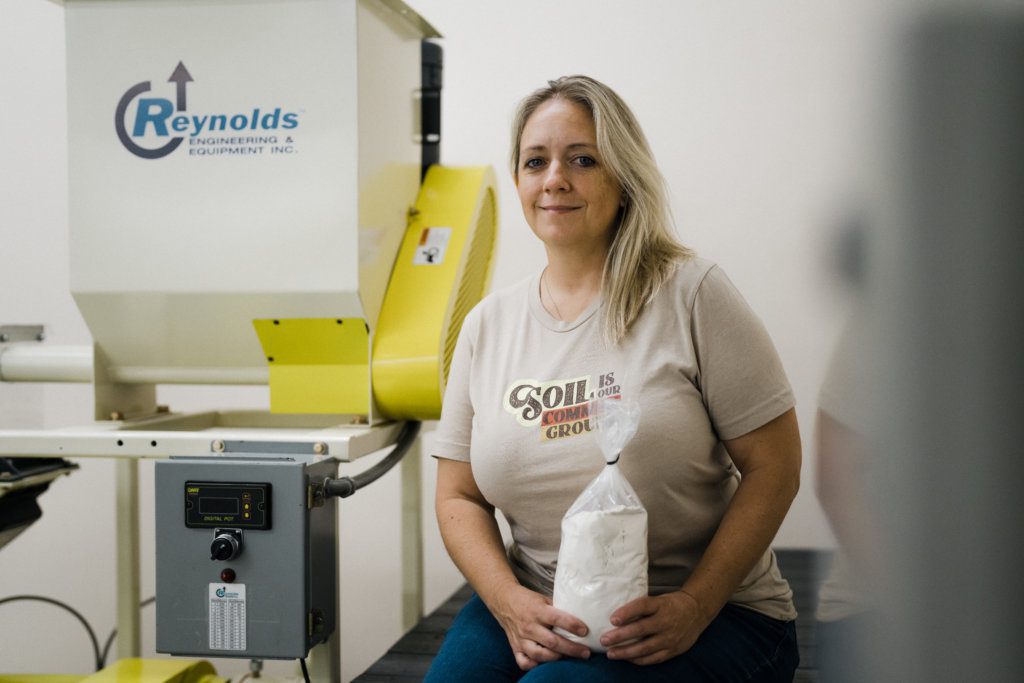
For brands, it is really good, because that component of working with a regenerative farm allows us to have a value-added product. It’s also really helpful for the farmers because typically their product gets sold on the commodities market and they may not get so much money for it. They get whatever they’re told they’re going to get and they don’t even get to price their own product.
One of the farmers that I’m working with is a guy named Adam Chappell out of Arkansas. He’s a regenerative farmer, and he grows rice, cotton, corn, and maybe soybeans as well. Then there is another Canadian farmer that I’ll probably be buying directly from, too. He’s right across the border from either Wisconsin or Minnesota. He’s had a ton of testing on his soil and ingredients already. So, I’m looking forward to getting all kinds of ingredients for my new flour mill that we’re getting ready to set up.”
“For the recipe development, I had to do some research because gluten is the thing that holds it together and makes things light and fluffy. Taking that out presents a challenge.
We did sensory evaluations, which are a little above and beyond just taste testing with two different celiac groups in the Columbus and Dayton areas at certain grocery stores that I had relationships with.
For that, we brought several people in who were on gluten-free diets and had them try the three pizza crusts that I had developed and compare them to what I thought were the three best gluten-free pizza crusts on the market at the time and were being sold in those stores.
They didn’t know which ones were which, but after testing them, one of my pizza crusts came out on top as the winner for both sensory evaluations at two different locations and with two different groups.
Now, we have a traditional plain crust and one that’s a garlic and herb crust. Eventually, we have plans to do an ancient grains crust, and a dessert pizza crust as well with brown sugar and cinnamon flavors in it.
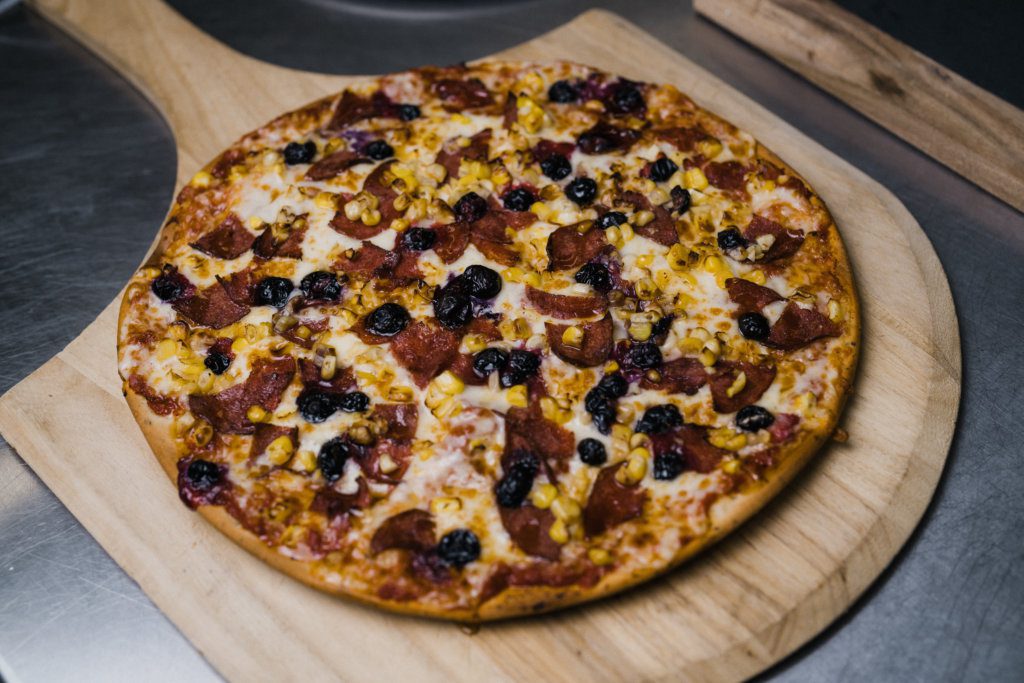
At the time, eating gluten-free wasn’t as widespread as it is now. Today you have a lot of people doing it and seeing that it might be healthier, or it doesn’t bloat them. But at the time, it was people who actually had celiac disease and if they had any type of gluten, they would be sick for days. It was important for me to try to help them.
I also tried many of the other gluten-free products and they were just really bad. In order for me to pick the best ones in the store to compare my pizza crust to during the sensory evaluations, I had to try them. For some, I didn’t even know why they were calling it pizza, it was so bad. I tried them all and I chose the best ones that I could find and had my pizza crust go up against those ones. I wanted to know mine really tasted better than the best gluten-free option.
We’ve received a lot of feedback from customers thanking me. I’ve even had a mother once tell me how thankful she was for me making these and it brought tears to her eyes. She had a child that had celiac disease, and she couldn’t find anything that he liked to eat.
It just drives you to think that nothing is impossible and that you just have to think outside of the box. There are a lot of people that don’t want to think outside the box, they just want to go down that same path. But that’s not how change happens.
Now, I’m trying to make it even healthier. By choosing to buy regenerative brown rice directly from a farmer, we actually know where it was grown and who grew it. We mill it, so we know it didn’t go into a silo and get mixed in with a bunch of other rice before it gets taken to a mill. That was one of our problems with the food chain and overall distribution. Farmers would take their products to a grain elevator, where they would have them stored and mixed in with other products. At that point, you lose the ability to know where anything came from, what the farmer did to the product, or what the soil looked like.
We’re creating a new website right now where there’s going to be a whole page dedicated to meeting the farmers. Any of the ingredients that we’re purchasing directly from farmers we will have profiles of them, links to their farm, and information about them.”
“Another reason for starting our own mill is that we were having problems with other flour mills. It’s not just me, but the other farmers we are working with were experiencing it too. We were all having issues with the current mills that exist because they want minimum orders of 20,000 pounds. If you want to bring in your own rice there, you have to jump through all these difficult hoops. You also have to have a 20,000-pound minimum order, which is a lot. That was causing a hold-up while we were trying to move forward with bringing regenerative products to market.
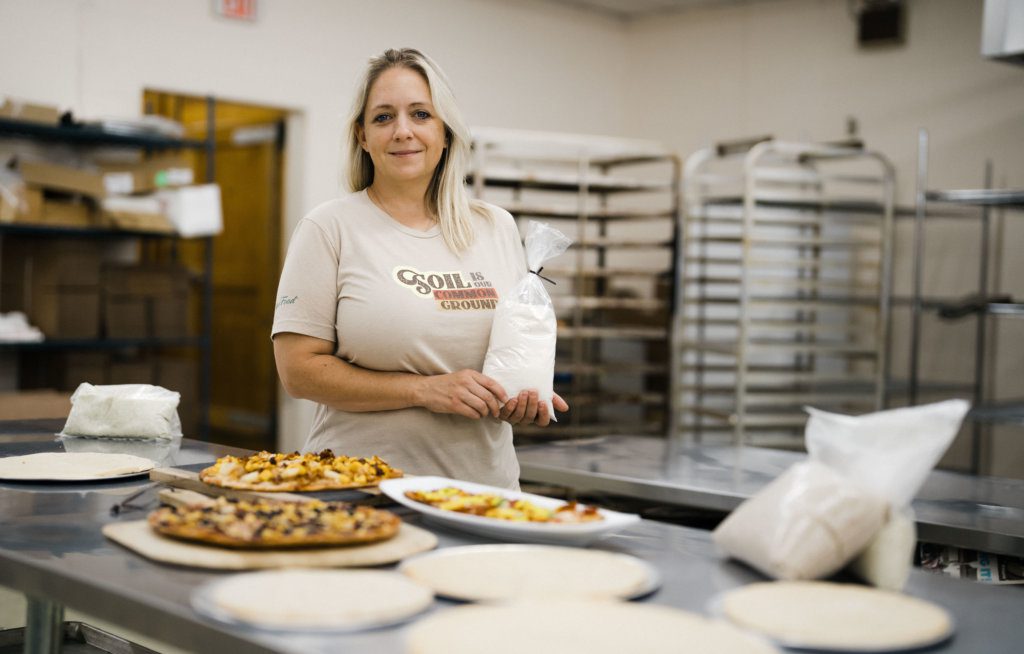
There are some companies out there that are already jumping on that bandwagon claiming that they’re regenerative. Then when you see the reasons why they’re calling themselves regenerative, it’s because they’re using cover crops. That’s great, but that really doesn’t make you regenerative. That is one tiny step in getting there, but there is a lot more to it. So, that’s why we’re going to be completely transparent and post information on our new website.
I think transparency is what people want. They want to see the reasons why I call my product regenerative and that I’m not just making it up. We will have all kinds of information about the soil and the ingredients that are tested. We will be posting the results so that people can see for themselves.
As an entrepreneur, you kind of have all these ideas and when you say to someone, ‘What if we did this? This would be a great idea’, you get people that say your idea is impossible.
It just drives you to think that nothing is impossible and that you just have to think outside of the box. There are a lot of people that don’t want to think outside the box, they just want to go down that same path. But that’s not how change happens.
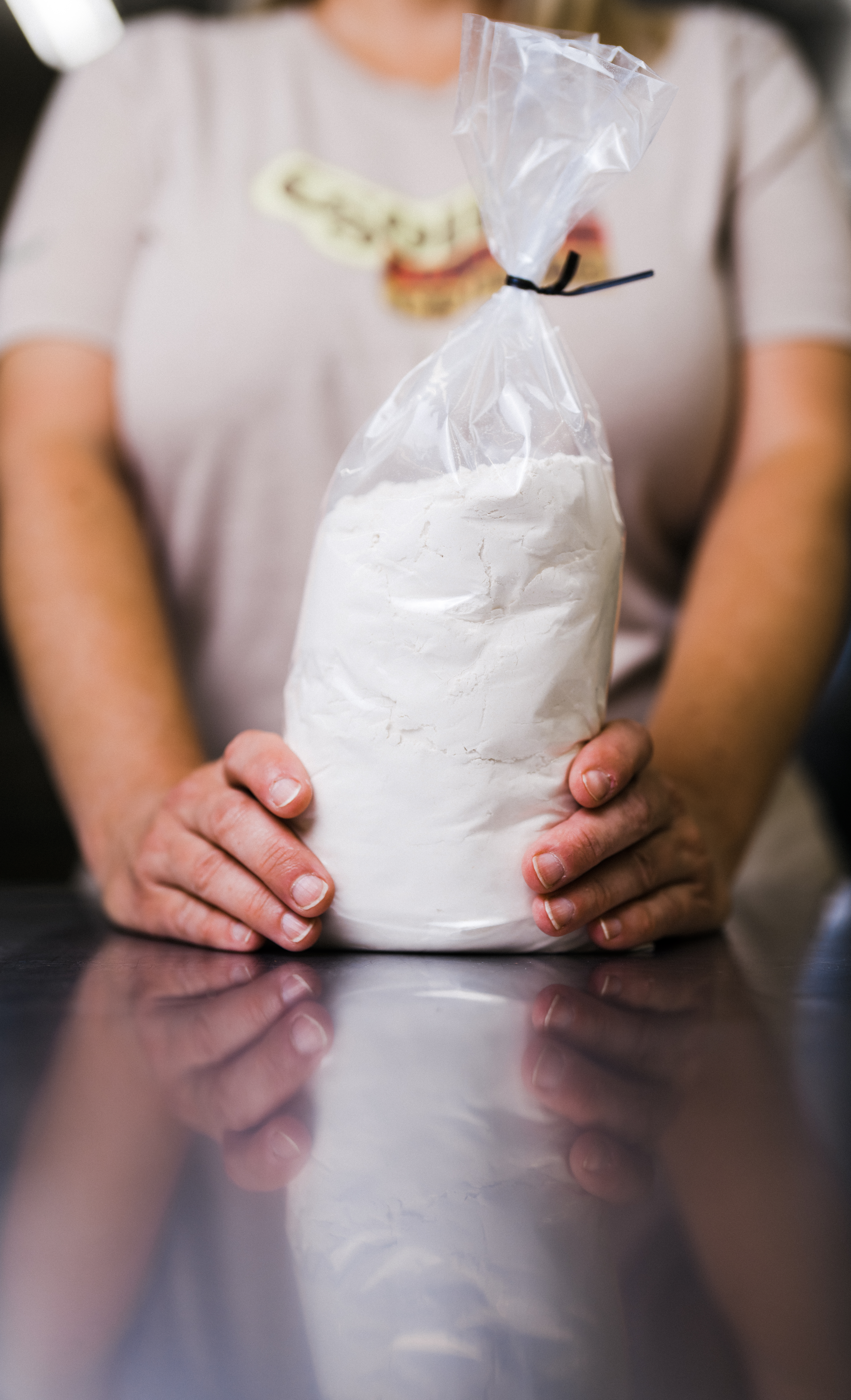
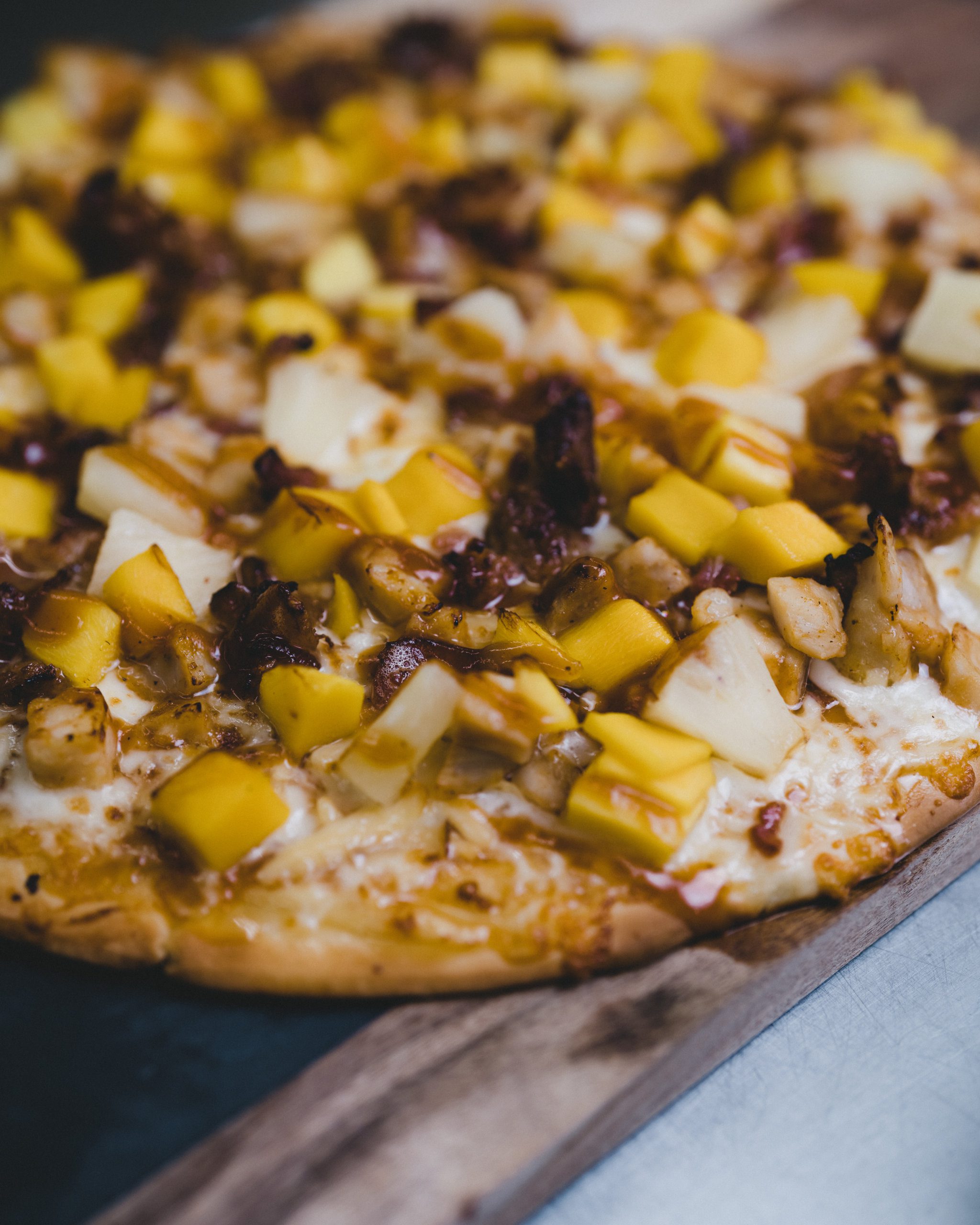
To take it even a step further, I’m not just making flour for my own product. Now, I’ve got other gluten-free food companies calling me and asking when the flour is going to be ready. So, we will also have flour, not just pizza crust, to sell directly to consumers. If stores are interested, that’s fine. They can knock on my door and I’ll sell it. Our milling operation is named Regenerative Mills.
But interestingly enough, we have had other food manufacturers approach us that are out there making things on a small scale right now. They need someone like me to provide them with one pallet of product or even half a pallet. If they’re willing to pay for the shipping and the costs of sending even a 50-pound bag through UPS, I’m all for it. The mill I have right now won’t take less than a pallet, which is a lot for a small company.”
“I grew up in Belmont County. I have a six-year-old son now named Isaac and so I wanted to be closer to home. Everyone in my family that was previously living in Columbus had moved back to Belmont County, as well. So, with that, I moved back almost six years ago.
Initially, I couldn’t find any real estate options that I could call my own that would work. So, I had to keep driving back and forth for two years, once a week up to Columbus to manufacture. It’s a two-hour drive, then we would bake and I would try to get a group of friends or people from a temp service to show up to work, if they showed up at all. It was rough. I just rented space from friends of mine and then I would drive back. It made for a long day, but I had customers and orders to fulfill.
On the front end and the retail side, I feel like we’re becoming a destination location, because we’re kind of off the beaten path, but we’re not that far off. We’re only a mile from a major interstate.
After two years, I finally found a place in Bellaire, Ohio that was a grocery store that had been in the family for something like 99 years and at that particular location for 50 years. They didn’t have any other family members to take over and they were ready to retire. The business also had five brothers that were in real estate and preferred that whoever bought it was a company that was still somehow related to food.
There’s a lot of fracking going on in this area right now, between big coal or oil and gas, which has had a huge impact on the local real estate prices. People who had buildings for rent wanted people in oil and gas to rent from them, because that comes with a higher premium. It was kind of hard at first to find a place, but it worked out.
I found this building and we did renovations. I had to go to five banks before I finally got one that said yes and was able to help me out. The flour mill is something that has just taken shape this year. We were able to get a $50,000 grant from the State of Ohio for matching funds to go towards the flour mill and buying the equipment.”
“In a small town, everybody knows your name.
For instance, I joined the Saint Clairsville Area Chamber of Commerce, and started doing radio and TV commercials, or have done interviews with different people. You start getting recognized, and people say, ‘I saw your commercial and I’m so glad that you have food like this here because nobody else is doing it. But why are you here? You should be in a bigger city like Columbus.’
Maybe I could benefit from the higher population there, but when you’re on the manufacturing side, does it really matter where you’re at? It really doesn’t on the back end. On the front end and the retail side, I feel like we’re becoming a destination location, because we’re kind of off the beaten path, but we’re not that far off. We’re only a mile from a major interstate.
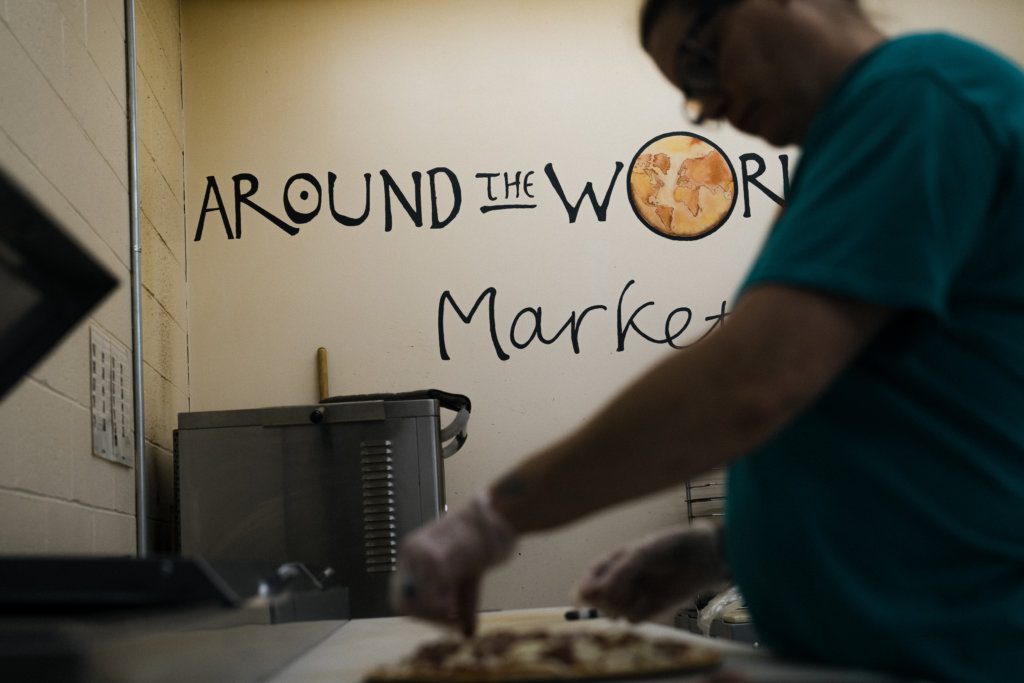
Previously, this building was a grocery store and we’ve kept that part of it open for the community. We still have a full deli, a bakery with doughnuts and there’s a large selection of beer and wine. I’ve just kind of upgraded it and brought in better selections and people were grateful for that.
We were previously takeout only, which was fine, especially during the pandemic. But I think people are anxious to be able to get out and socialize again and sit down and enjoy a beer again. So we have added indoor dining, and some outdoor seating because if someone is going to come to a destination location like mine to buy a pizza, they don’t really want to do takeout. They want to sit down and enjoy it.”
“As soon as you come into the shop, we have a giant menu for creating your own pizza. We have specialty pizzas that are flavors from around the world. We have a Polynesian pizza. We have one called a Native American Buffalo Warrior pizza that actually has bison pepperoni from a local bison ranch from the county just south of us. We have a Reuben pizza and an Irish Breakfast pizza. We’re just building on those flavors from around the world.
We do wings as well and we make all of our sauces in-house. A lot of places people go, they just buy whatever Sysco or the food distributor has. I started out with making wing sauces at the very beginning, so it’s just one of those things where I must continue making those from scratch.
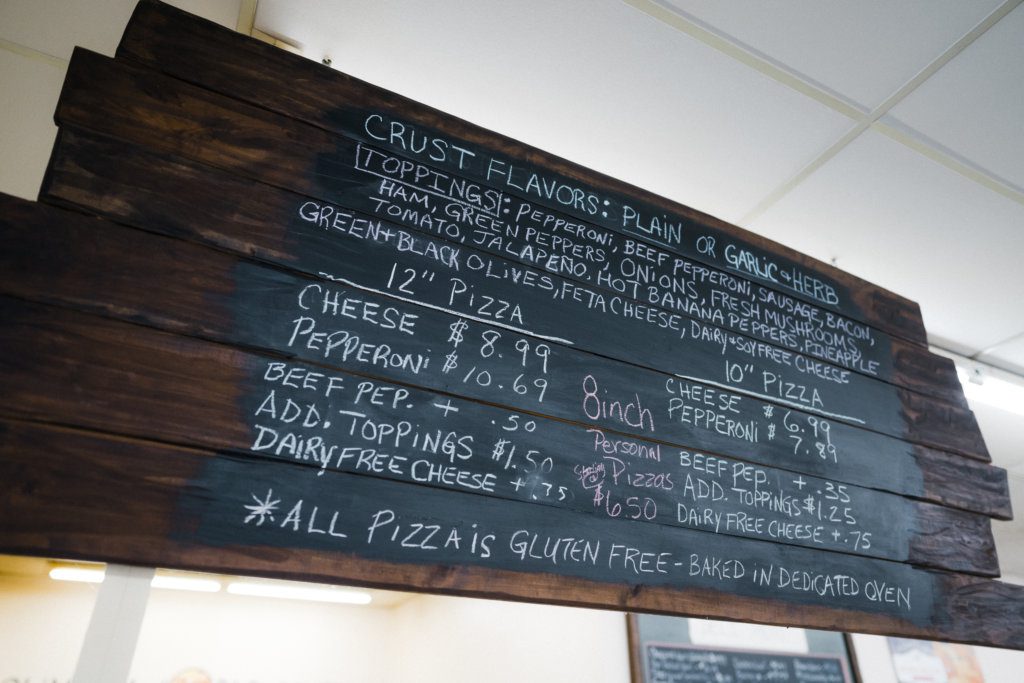
We have one called the Ohio River Monster and that is like a sweet and tangy barbecue sauce that we put our meat rub in to kind of ‘murky up’ the waters so to speak. We also have one called the Pawpaw Sweet and Sassy. It’s interesting, there are still people here in this area, where it is natively grown, that don’t know what a pawpaw is. It’s kind of like a cross between a banana and a mango. We buy it from a pawpaw farmer down in the Athens, Ohio area. I’ve known him for years, ever since I worked at the kitchen incubator. We buy his pawpaw slurry and add our own ingredients to it, including habanero to create our own wing sauce. We use some pretty unique ingredients.
We also have made from scratch subs, which are eight-inch hoagies. We have specialty hoagies or you can make your own. We use Cellone Bread that’s made fresh daily up in Pittsburgh. We try to use as many local and regional products as we can. Our pepperoni and beef pepperoni both come from Ezzo Sausage Company in Columbus.
We like to offer several unique things at our store. We have a ton of vegan options including cheese, vegan pepperoni, vegan meatballs, and sausages. We haven’t launched all of those yet, but we do have people that are interested. I think we’re the only ones in the Ohio Valley or at least the upper Ohio Valley that even offer a dairy-free cheese topping.
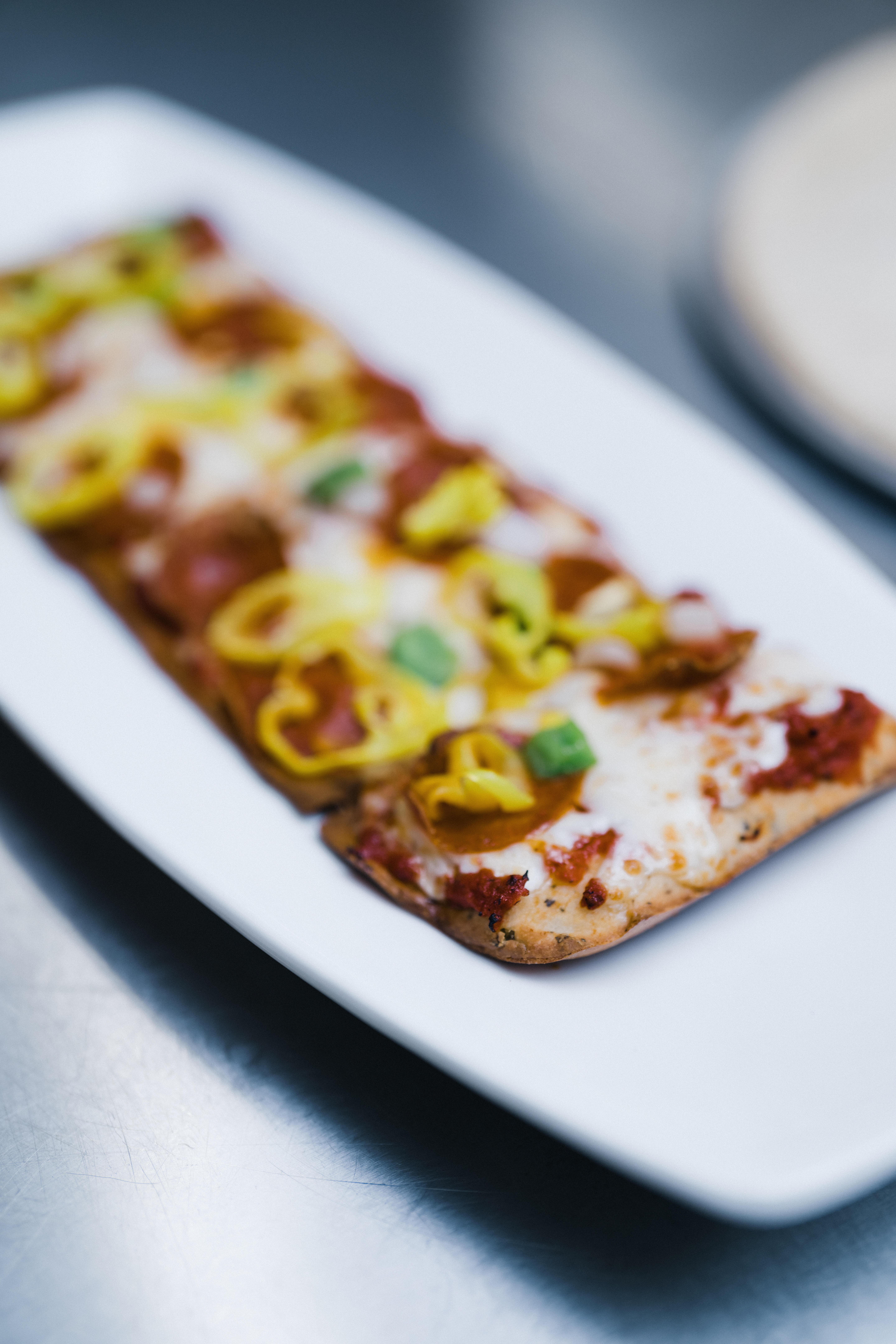
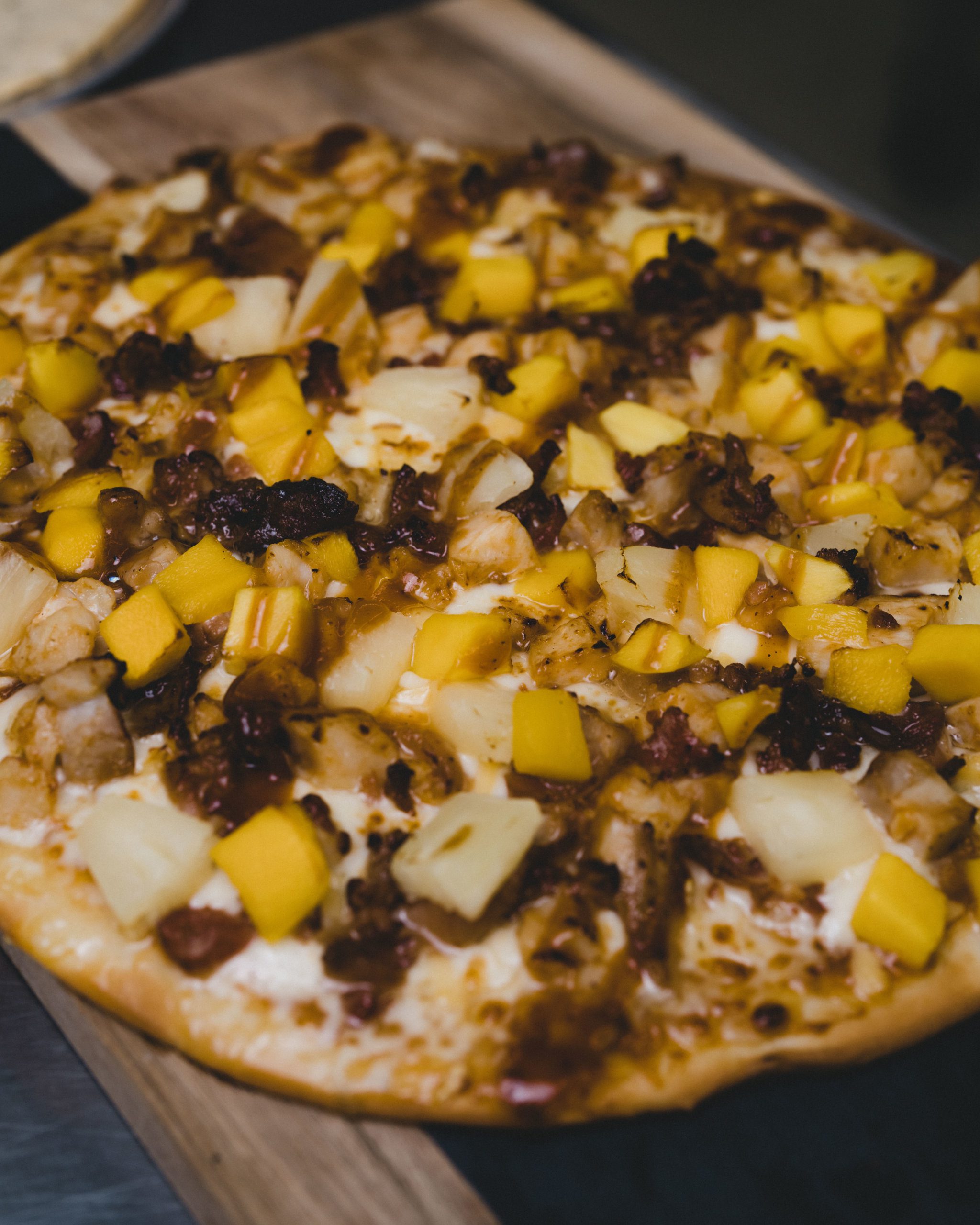
On top of all that, with all this other stuff that we are doing, we are also getting ready to launch five new restaurant concepts out of the same location. So, we’re actually going to have a food hall, right here in Belmont County.
We are working on dishes and menu items, and I just contracted one of the chefs recently. She and I were working on dishes the other day and we’ve got one called Curry On. There literally is no Thai or Indian food here, so it’s kind of for selfish reasons, too. I don’t want to have to drive over an hour to get a good curry dish.
So, for the restaurant concepts, we’ve got Curry On, which is Thai and Indian fusion. We’ve got one called Rise and Shine Ohio Valley. That one is all breakfast food and we started this one in October of 2021. We offer a full breakfast including Belgian waffles, waffle bowls and sandwiches, and croissant breakfast sandwiches. We have doughnuts and pastries as well.
Then we have one called Mediterranean Thyme. There used to be a Lebanese bakery in Wheeling and it closed down a few years ago and everyone is kind of bummed about that. Because of that, we want to have some products and a menu that has more Greek, Lebanese, Moroccan, and Sicilian flavors. Basically, anything that comes from the Mediterranean area.
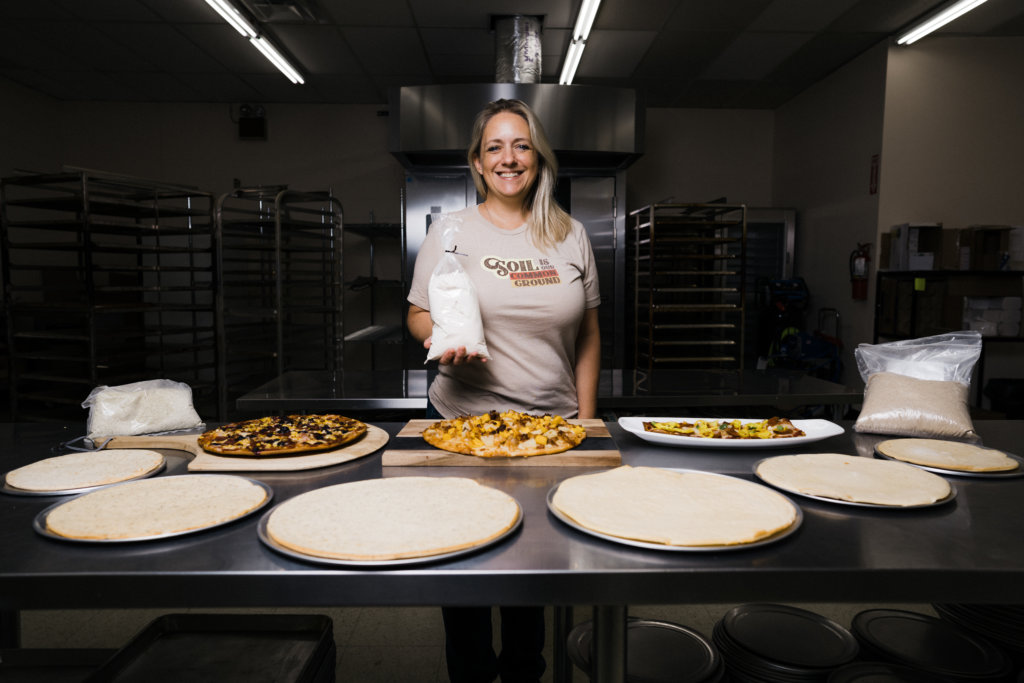
Then we have one called Keto Whiz Café and everything there will be keto-friendly or sugar-free, because we get calls about that all the time asking if we have keto-friendly pizza or bakery products. We have another one called Meat and Potatoes, and it’s just straight-up meat and potatoes because a large amount of the population here just wants their meat plus three, so to speak.
I think the model will really provide something for everyone. Sometimes you have family members with different tastes, like a husband who just wants his meat and potatoes, while his wife really wants Thai or Indian food.
We are working on finalizing the menus now, and fingers crossed, we should be able to get that up and running within the next month. Our indoor and outdoor dining are now available. A place where people will want to come and enjoy a meal”
—Jennifer Kocher, Around the World Gourmet
Bellaire, Belmont County
#WeAreOhioSE



